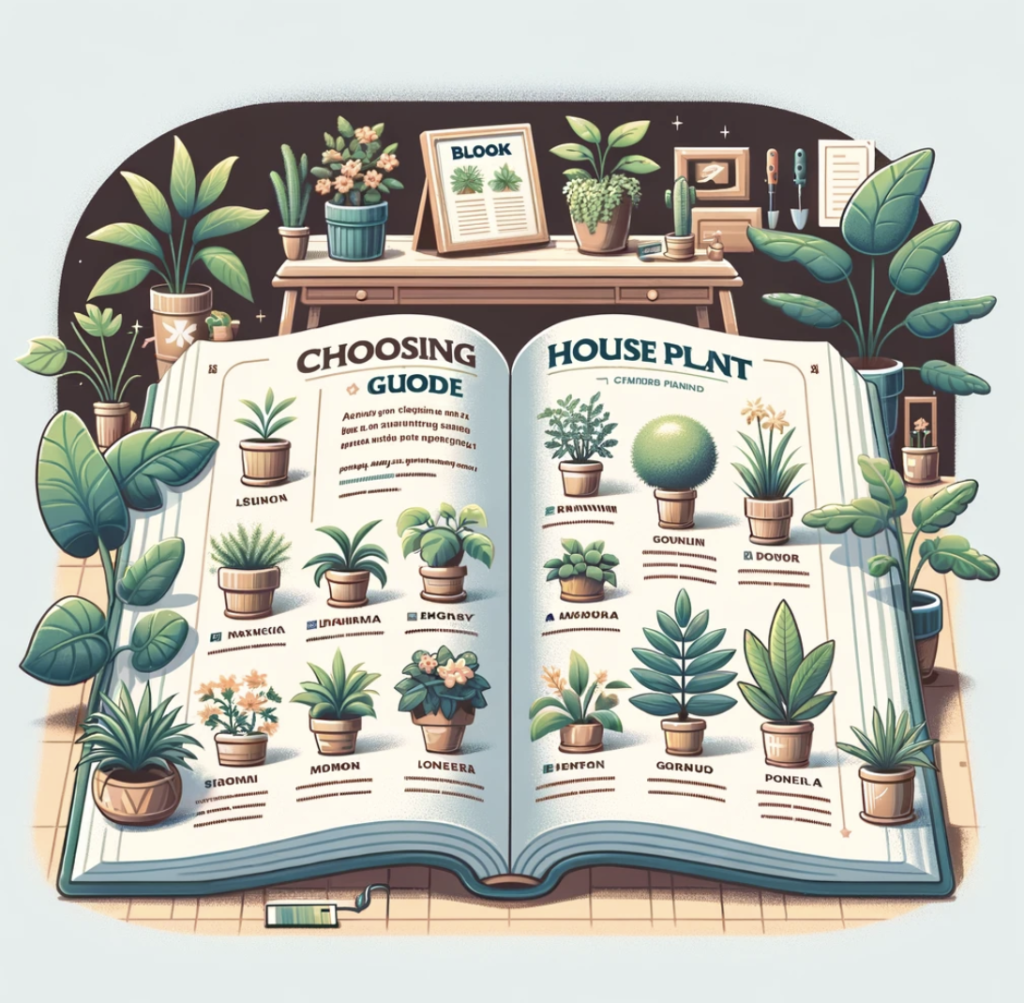Guide to Choosing Indoor Plants: Select the Perfect Houseplants for Your Space
Introduction
Choosing the right indoor plants for your home is an essential decision that goes beyond aesthetics. It involves understanding the environmental conditions of your area, the amount of care you can dedicate, and how much space you have available. This comprehensive guide will assist you in selecting the ideal houseplants based on light, space, and care requirements, ensuring your indoor garden thrives and beautifies your home effectively.

Understanding Your Space
Evaluating Light Conditions
Light is a crucial factor in plant health. Assess the light levels in various parts of your home to choose suitable plants:
- Bright Light: Direct sunlight, typically in south-facing windows, perfect for plants that thrive in sunny conditions.
- Moderate Light: Indirect or filtered light, ideal for east or west-facing windows.
- Low Light: Limited light, common in north-facing windows or rooms with few windows.
Plant Recommendations Based on Light:
- Bright Light Plants: Succulents such as Aloe Vera or Jade Plant, which need several hours of sunlight daily.
- Moderate Light Plants: Ferns, Spider Plants, and Ivy, which are adaptable to fluctuating light conditions.
- Low Light Plants: Snake Plants and ZZ Plants, which are perfect for darker corners.
Space Considerations
The amount of available space is critical when selecting a plant:
- Large Spaces: Consider larger plants like the Fiddle Leaf Fig or Rubber Tree, which can grow to impressive sizes and become focal points in a room.
- Small or Confined Spaces: Opt for smaller potted plants or creative solutions like vertical gardens or hanging plants such as String of Pearls.
Assessing Environmental Conditions
- Humidity Levels: Tropical plants like Orchids require a humid environment, while desert plants such as Cacti prefer dry conditions.
- Temperature Preferences: Most houseplants thrive in temperatures that are comfortable for humans, between 65°F and 75°F (18°C and 24°C).
Choosing Plants Based on Care Requirements
Watering Needs
Knowing how much water your plants need is crucial to their survival:
- Plants with High Water Needs: Such as Pothos and Peace Lily, which prefer their soil to be consistently moist.
- Plants with Low Water Needs: Such as Cacti and other succulents, which require minimal watering and are great for those who frequently travel or tend to forget about watering.
Feeding and Maintenance
The nutritional and maintenance needs of your plants can vary significantly:
- High Maintenance Plants: Orchids and Gardenias need specific feeding schedules and careful pruning.
- Low Maintenance Plants: Snake Plants and Philodendrons are forgiving and require minimal care, making them perfect for beginners.
Popular Indoor Plants and Their Benefits
Air-Purifying Plants
These plants do more than just beautify your home; they clean the air, providing a healthier living environment:
- Spider Plant: Excellent at removing pollutants like formaldehyde and xylene.
- Bamboo Palm: Effective at filtering out benzene and trichloroethylene.
Aesthetic Value
Plants significantly enhance the visual appeal of your space:
- Orchids: Provide an elegant and sophisticated touch.
- Monstera: Known for its dramatic leaves, adds a lush, tropical feel to any room.
Edible Plants
Adding edible plants to your indoor garden not only looks great but also provides fresh herbs and vegetables:
- Herbs: Such as Basil, Mint, and Thyme, are perfect for kitchen windowsills and useful in cooking.
- Vegetables: Small varieties like Cherry Tomatoes and Peppers can easily be grown indoors and are handy for fresh salads.
Additional Tips for Plant Care
Choosing the Right Pot
- Material: Clay pots are porous and good for plants that don’t like wet feet, while plastic pots are better at retaining moisture.
- Size: Always choose a pot that gives your plant room to grow, both in width and depth.
Long-Term Plant Care
- Repotting: Regularly changing the potting soil and increasing the pot size can help prolong the life of your plant.
- Disease Management: Be vigilant about signs of disease or pests and treat them promptly to prevent spread.
Conclusion
Selecting the right indoor plants involves careful consideration of your home’s conditions and the plants’ care needs. By using this guide to understand the various requirements for healthy plant growth, you can enhance your living space with beautiful, thriving plants.
Explore a wide variety of indoor plants and gardening supplies on Amazon, and start transforming your home into a green oasis today. Happy planting!
This extended guide integrates detailed insights into indoor plant care, emphasizing practical tips and diverse plant options to engage a wide audience and encourage interaction through embedded affiliate links.